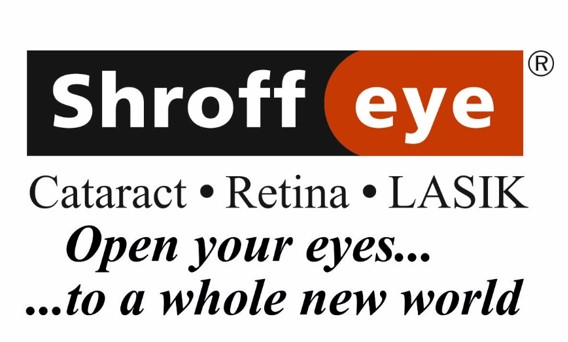Shroff Eye Hospital is India's First Eye Hospital accredited by the Joint Commission International (USA) since 2006. Shroff Eye is also India's first and only Wavelight Concerto 500 Hz LASIK center. Shroff Eye has stood for excellence in eye care since 1919. A firm commitment to quality is at the heart of all services provided at our centers at Bandra(W) and Marine Drive, Mumbai.
Blindness darkens the lives of 45 million people in the world.
Another 135 million worldwide live with Low Vision (WHO).
What is Low Vision?
Normal vision is the ability to see comfortably what is around us, whether far away or near, with or without glasses. Normal vision is known as ‘20/20’. This simply means that the eye being tested is able to see an object at 20 feet as well as any eye with very good vision. If you have 20/60 vision, this means you can see at 20 feet what a person with good vision can see at 60 feet.
Almost everybody wishes to have a healthy, independent life, where one can manage their day-to-day activities by themselves, and live with a reasonable amount of self-sufficiency. But this simple wish, at times, becomes impossible for people with low vision.
Low vision means that even with regular glasses, contact lenses, medicine, or surgery, people find everyday tasks difficult to do. They find difficulty in performing daily tasks like identifying currency notes, reading, writing, cooking, seeing the TV and also recognizing faces.
What causes Low Vision?
Low vision can occur at any age, but by far it affects the elderly.
A variety of disorders that affect the eye and the visual system may cause low vision. Birth defects, injuries, certain diseases of the body and aging all may lead to loss of sight. Most commonly, it is due to scarring of the central part of the retina (the light-sensitive tissue that lines the back of the eye). Eye diseases such as Macular Degeneration, Diabetic Retinopathy, Glaucoma and Retinitis Pigmentosa can cause an irreversible impairment of vision.
What can be done for people suffering from low vision?
People with low vision have useful residual vision that can be improved with the help of ‘low vision devices or aids’ and visual rehabilitation services. The purpose of visual rehabilitation is to enable the person to perform tasks necessary for his daily activities.
In addition to learning how to use optical devices or ‘low visual aids’, people with low vision can acquire new strategies for doing everyday tasks and getting around safely. The adaptive process, in coordination with low vision services, is known as vision rehabilitation. Its goal is to equip people who are visually impaired with the skills and confidence needed to function as independently as possible.
Vision Rehabilitation is the Key to Independence!
Who trains people with low vision?
A person’s visual function is not always measured accurately by reading an eye chart. A more thorough functional vision assessment by a low vision specialist is an important first step in the vision rehabilitation process.
Since each patient needs a personal evaluation and devices that are suitably prescribed, at the vision rehabilitation service, a specialist checks the patient’s eye and helps to rehabilitate the patient using vision enhancing devices.
What are Low Visual Aids or devices?
Optical devices such as hand and stand magnifiers and high powered spectacles can help in reading newspapers and checking labels while telescope spectacles can help improve the distant vision.
Non optical devices such as letter writers, signatures guides and thick black felt tipped pens can help increase the contrast and make it easier to perform routine tasks.
Patients with significantly impaired vision can be rehabilitated using Closed circuit TV (CCTV) reading machines and voice-activated computer programs.
Shroff Eye Hospital runs the Shroff Eye Low Visual Rehabilitation Centre at its facility in Bandra (W), India’s only eye hospital to be accredited by the Joint Commission International, USA. The centre is managed by Dr Rahul Shroff and his team which has been specially trained to manage Low Vision patients.
Services include:
- Functional vision examinations
- Instruction to help patients adjust to, and reap the maximum benefits from, optical devices such as high-power spectacles, magnifiers and telescopes
- Recommendations for adaptive devices that reduce glare, as well as for special lighting, large print material, video magnifiers and adaptive computer technology
- Follow-up care as needed, including additional low vision instruction and training
Our trained specialists equip people of all ages who are partially sighted with the skills and confidence they need to meet the day-to-day challenges of life and help them become participating and contributing as members of society, to the extent they can.
At Shroff Eye, the approach to rehabilitation is highly customized. It depends on how early in life visual disability has occurred, and the severity of the disability. For the vision rehabilitation specialists at Shroff Eye, rehabilitation is not just about imparting new functional skills. It is also about equipping patients with confidence, and about providing the attitude and emotional strength to using these skills to enhance the quality of life. While vision rehabilitation cannot help a person recover sight, it can help the person make the most of their existing sight.
Remember …LOW VISION = USABLE VISION… you just need to be taught how!!!






